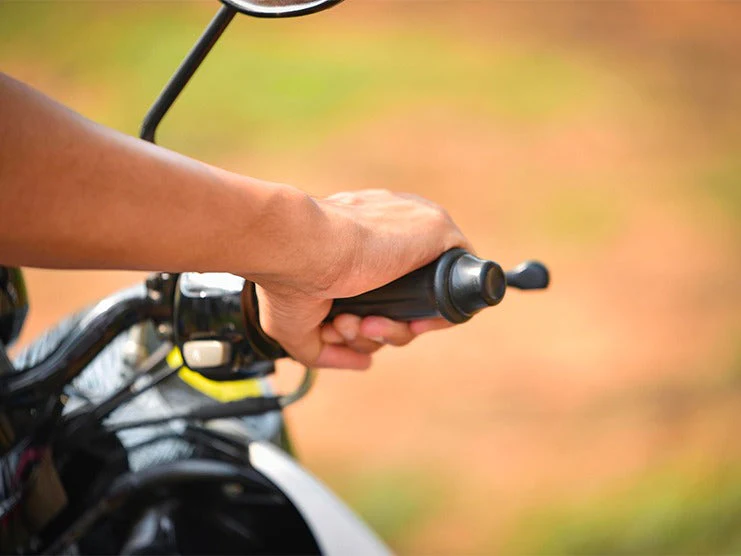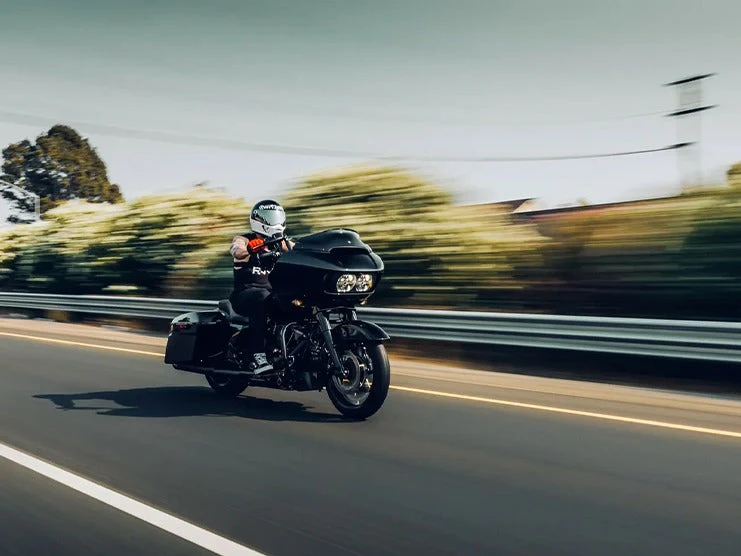Throttle response is how quickly your motorcycle engine reacts to acceleration. A highly responsive engine takes less time to respond to acceleration, while a less responsive engine takes more time to react to acceleration. The quicker the throttle response, the better the bike's performance.
This article discusses the reasons why motorcycles have poor throttle response.
Table of Content

1. How Does the Throttle Work?
The throttle is part of the air intake system, which controls airflow inside the engine. The throttle valve is found in the intake manifold of fuel-injected engines, while it is in the carburetor of carburetor-powered engines.
When the rider accelerates, the throttle plate moves inside the engine, allowing air to enter the intake manifold. The engine senses how much air is flowing into the intake manifold and supplies the right quantity of fuel to achieve the ideal fuel-to-air ratio. The engine becomes more responsive as the fuel-to-air ratio increases.
2. Reasons for Poor Motorcycle Throttle Response
2.1 Bad Fuel
Because motorbikes are not usually ridden throughout the year, there’s a chance they may have old gas. Fuel can go bad in as little as 30 days. If you ride your motorcycle infrequently, it’s best to add a fuel stabilizer to the gas.
Nowadays, ethanol is added to gasoline. Over time, ethanol will absorb moisture and reduce the strength of the gasoline. Your motorbike may operate poorly as a result of diluted gasoline, including less acceleration and more throttle lag.
If the gas in your bike is really old, it is best to empty it rather than continue running your motorcycle on it. An excellent method to prevent these issues is by adding a stabilizer in the first place.
2.2 Clogged Fuel Filter
The fuel filter improves fuel economy by removing debris from the fuel. When the filter is blocked or dirty, the gasoline takes longer to pass through, resulting in delayed acceleration and throttle response.
Certain fuel filters can be cleaned and reused depending on how long it has been since the previous cleaning and the normal riding conditions. For instance, motorcycles that travel on dusty or unpaved roads may require cleaning or replacing the filter more frequently than those that travel on paved roads. One way to prevent poor throttle response is by keeping your fuel filter clean.
2.3 Unutilized Fuel Economy
Each motorcycle has a different way of regulating throttle response. Sometimes the rate of acceleration changes to ensure the functionality of the engine and the overall condition of the bike.
Your motorcycle’s throttle response will be hindered if the fuel economy is incorrect. If you notice a lag in throttle response while riding, immediately take your motorbike to a repair shop for inspection.
2.4 Incorrect Technological Components
Some modern motorcycles have a complex system of sensors that communicate with each other and ensure they run more efficiently and smoothly. One of these sensors is the mass airflow sensor (MAF) which is responsible for acceleration. It ensures the motorcycle engine combusts properly by regulating the fuel-to-air ratio. If the mass airflow sensor is not working properly, it may affect the throttle response since the motorcycle will no longer be able to measure the required amount of fuel necessary to accelerate quickly. When dealing with technical issues, it’s recommended you consult automotive professionals.
2.5 Wrong Spark Plugs
Spark plugs ignite the fuel and air mixture in the combustion chamber during combustion. All motorcycles have a specific spark plug size. Spark plugs have specific heat ratings and gap widths. These configurations are designed to only function when fitted on a specific engine type. Spark plugs that are not compatible with your motorcycle’s engine won't function correctly. An incorrect spark plug might cause your motorcycle's poor throttle response, reduced acceleration, poor gas mileage, and faulty ignition.
Read your owner's manual to find the specifications for your motorcycle’s spark plug and how to install it correctly. You can go to a nearby auto repair facility that uses computerized databases to find the appropriate spark plug.
2.6 Carburetor Problems
A carburetor mixes fuel and air together and feeds the mixture to the engine. However, it can become dirty or clogged over time due to debris buildup and lack of maintenance. Gum, dirt, and debris become deposited on the carburetor as it becomes older. These deposits usually form in the critical parts of the carburetor like the carb jets. This will restrict airflow and cause your motorcycle to have a sluggish throttle response.
If you have cleaned the carburetor but are still having problems with the throttle, there could be another issue with the carburetor. The carburetor may have a vacuum leak that sucks in more air than normal. The excess airflow disrupts the fuel-to-air ratio and causes the engine to run on a lean mixture. To check for a vacuum leak, turn on your motorbike, and spritz the carburetor with a carb cleaner. If you see an increase in the bike’s idle rpm, then there is a vacuum leak.
2.7 Worn Spark Plug
Your engine depends on the spark plugs to combust the air-fuel mixture in the combustion chamber. The spark plug will not be able to ignite the fuel and air mixture correctly if it is dusty or worn out.
Spark plugs can accumulate carbon and oil residue over time due to constant operation. The spark generated by spark plugs will be less strong due to the residue, resulting in less power and poor acceleration.
2.8 Dirty Air Filter
Air filters are the parts that require maintenance most often and need to be overlooked. Your bike may suffer from several performance issues due to a blocked air filter. A dirty air filter can cause an improper fuel-to-air ratio and limit airflow to the engine. As a result, the combustion chamber will have too much gasoline. An engine with a rich fuel mixture will perform poorly and cause poor throttle response.
2.9 Improperly Engineered Electronic Throttle Control System
A poorly engineered electronic throttle control system is a rare cause of poor throttle response. Flawed engineering in electronic throttle control systems can cause poor engine response and throttle lag.
3. How to Improve Motorcycle Throttle Response?
Follow the steps below to improve the motorcycle’s throttle response.
- Install a Cold Air Intake: Installing a cold air intake will improve airflow in the engine, resulting in faster acceleration and improved fuel economy.
- Upgrade the Exhaust System: A well-designed exhaust system improves airflow in the engine, resulting in more power and quicker throttle response.
- Use a Throttle Body Spacer: A throttle body spacer increases space between the intake manifold and the throttle body, resulting in improved airflow in the engine and improving throttle response.
- Replace Spark Plugs: Worn-out spark plugs can cause poor engine performance. Replacing them will ensure proper ignition and better throttle response.
- Change Air Filters: A dirty air filter can hinder airflow and cause poor engine performance. To improve airflow and throttle response, replace the clogged air filters.
4. Last Words
Your motorcycle can suffer from less acceleration or poor throttle response due to a variety of reasons, including old fuel, clogged fuel filters, unutilized fuel economy, incorrect technological components, wrong spark plugs, carburetor problems, and dirty air filters. If you want to improve your motorcycle’s aesthetics, you can add new saddlebags, sissy bar bags, tour packs, handlebars, fairings, seats, crash bars, luggage racks, and sissy bars.













Leave a comment
All comments are moderated before being published.
This site is protected by hCaptcha and the hCaptcha Privacy Policy and Terms of Service apply.